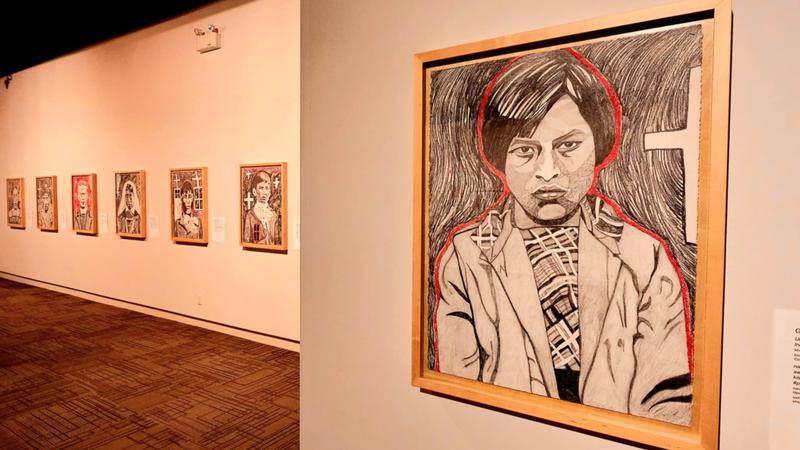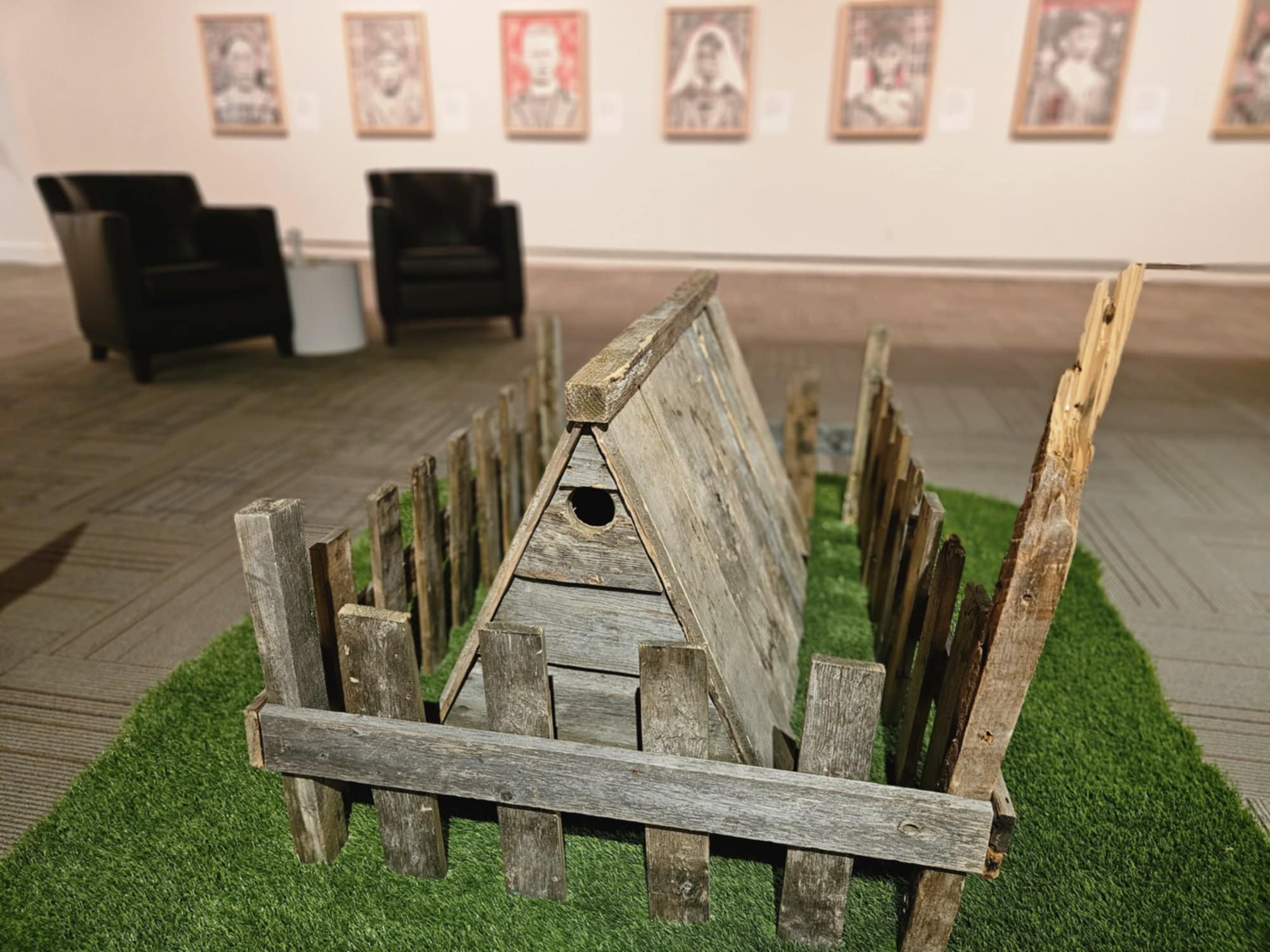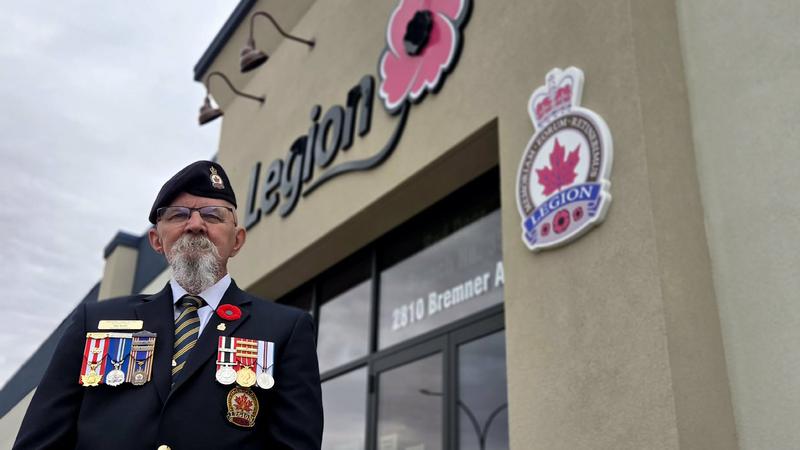
Exhibit at Red Deer Museum highlights unidentified, yet unforgettable faces of Ermineskin residential school
A travelling exhibit now at the Red Deer Museum + Art Gallery (MAG) entitled ‘George Littlechild: Here I am — Can you see me?’, which is on until Aug. 17, aims to shine an even brighter light on the horrific realities of the residential school system.
The exhibit’s 22 pieces are by well-known Cree artist George Littlechild, who is from the Maskwacis area, where the Ermineskin residential school was situated. The exhibit was curated by M.J. Belcourt, a traditional Métis artist working in the Edmonton area.
The display’s pieces are primarily of children who passed away at the residential school in Ermineskin, though the individuals remain unidentified.
Kim Verrier, MAG exhibits coordinator, says many visitors have shared how powerful the exhibit’s message is.




